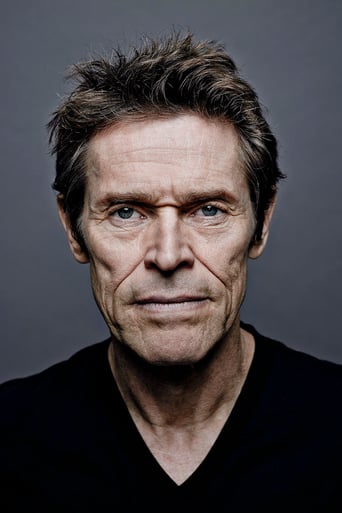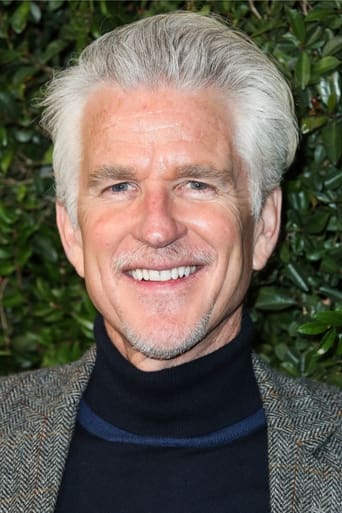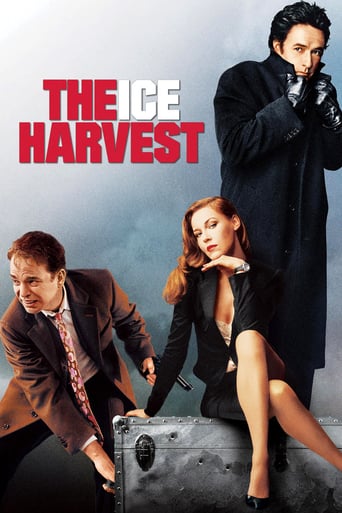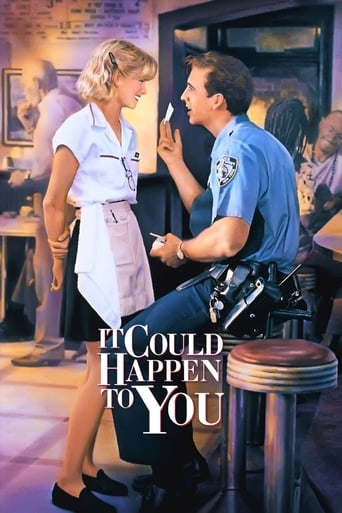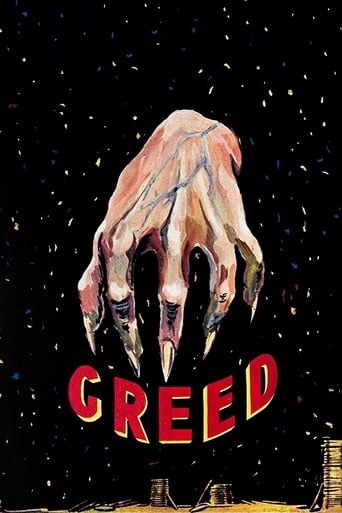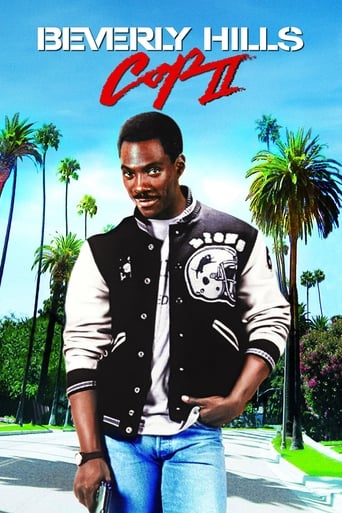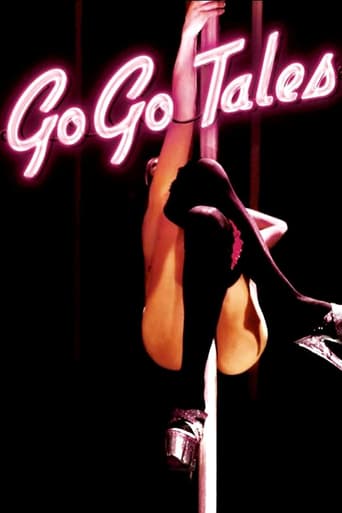

Go Go Tales (2007)
A financial struggle between owners of a go-go club threatens its future.
Watch Trailer
Cast
Similar titles
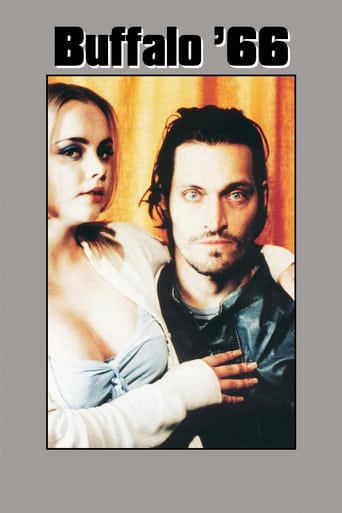


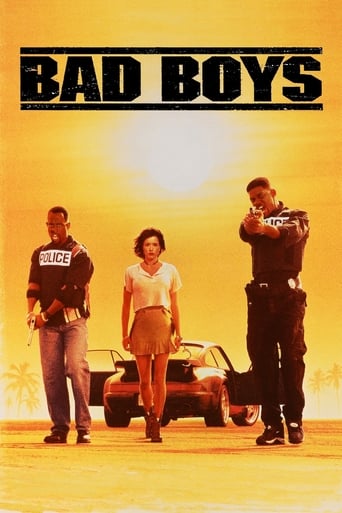
Reviews
Absolutely the worst movie.
This movie was so-so. It had it's moments, but wasn't the greatest.
Let me be very fair here, this is not the best movie in my opinion. But, this movie is fun, it has purpose and is very enjoyable to watch.
The film never slows down or bores, plunging from one harrowing sequence to the next.
"Here in America, there is no difference between a man and his economic fate. A man is made by his assets, income, position and prospects. His economic mask coincides completely with his inner character. He learns what he is through the vicissitudes of his economic existence within capitalism, and knows nothing else." - Theodor Adorno "Every dollar has a certain nervousness attached to it." - Ferrara A loose remake of "The Killing of a Chinese Bookie", Abel Ferrara's "Go Go Tales" is one of the directors best, late-career works. The film was panned by Western critics and would receive virtually no theatrical distribution, but was voted into several top-ten lists by the Cahiers du Cinema crew.The plot? Willem Dafoe plays Ray Ruby, the overseer of the Paradise Lounge, an up-market strip club which is slowly going broke. Profits are meagre, business is slow and Ruby's girls are all desperate for cash. To make matters worse, Ruby's brother (Mathew Modine), the supplier of Ruby's finances, is threatening to pull the plug on the club. Things look bad for the Paradise.In an effort to bring in revenue, Ray embarks on a series of elaborate schemes ("Frisbees with my face on them! What was I thinking?"). He ferries in Japanese businessmen, serves gourmet hot-dogs, renovates lounges and hosts Talent Show Nights, though to no avail. His business is going under. In a last ditch effort to save the Paradise, Ruby thus concocts a brilliant scheme. He'll rig the lottery and win 18 million! The plan works, but Ray can't find the winning ticket. Poor guy.Like most of Ferrara's later works, "Go Go Tales" is obsessed with money. Capitalism as gaudy flesh-market, Ferrara has every conversation in the film hinge on economics. And unlike most stripper movies, which centre on female exploitation, Ferrara broadens things. Every character, be they feisty landlord (a brilliant Sylvia Miles), upper management, financier, worker or dancer, spews an incessant stream of dialogue relating to payments, profits and back-pay. They're all struggling to make ends meet. In fits of desperation, they're also all forced to diversify in various different ways. And so strippers fight to sell movie scripts (the title of which is a symbolic allusion to "Gun for Jennifer"), wives dance to bring in cash (despite being married to doctors!), landladies sell real-estate to cover their losses, and millionaires likewise. In the middle of this hurricane is Rudy, part huckster, part caring patriarch, part loser, part shrewd capitalist, part charismatic impresario, part mean overlord. Stuck in a world in transition, he yearns for a simpler, sleazier time (he fantasises about "clean" ballet dancers, rather than strippers) in which people weren't part something but seemingly whole instead; a time before quaint sleaziness was hijacked by corporate sleaze. Meanwhile, the silly crab mascots of a rival business across the street steal Ruby's clients. Is nothing sacred?! "Go Go Tales" is full of melancholy, but it's a melancholy which Ferrara knows well. He began his career making pornographic and/or exploitation flicks, and even a film which chronicled the early, Times Square strip club culture in its pre-Giuliani heydays. Times change, though, and Ruby finds himself, not only struggling to stay afloat, but forced – just like Ferrara, who begs Europe for funding - to both cheat the system and play by madcap rules in order to survive. The film ends with Ruby finding his ticket, collecting his jackpot and then grimacing when he learns that over half his winnings will be lost to taxes.Expertly, "Go Go Tales" captures the agony and banality of human relations under capitalist regimes. Here, everyone seems indebted at birth, innovation and/or improvisation is never enough, counterfeit bills circulate to keep the system's illusions afloat, the cage's walls are riddled with hopeful but mostly defunct lottery tickets, the profit motive invades all human relations, money rules without obstruction and people operate at break-neck speeds, bodies go-going after money which itself seems to constantly flutter away.In Ruby's world, everyone thinks in terms of and exists only for cash. But whilst every character circulates in order to bring alive the system's real and fake bills, Ray provides a different function. He's the magician who provides the illusion of plenitude, of Paradise, the illusion that money, real and virtual, can usefully circulate.Incidentally, Cassavetes' "Chinese Bookie" dealt with a guy attempting to create a viable Utopia within the world of Mafia business. There the lead character sets up The Crazy Horse West, a club where human relations can hopefully become beautiful, familial and exist outside of Mafia logic. Ruby's Paradise was built to fulfil a similar function. The Paradise embodies the possibility that one can still create something wholesome within capitalism, both clubs designed to house experimental troupes which allow us to conceptualise different relations, communities, modes of interaction, performances and shared history. The experiment fails, of course. Despite his attempts to be a "good daddy", to host clean Talent Shows, to put on tasteful vaudeville routines, the Paradise is destined to be tainted by the sheer physics of money. The wife who dances for her husband, he her customer with both not even realising it, epitomizes this "corrupting" of human relations. Prostitution has become the norm, and the singular, spectacular event (the lights, the stage etc) has been replaced by something else entirely (literally a cosmetics boutique, an apt summary of Manhattan's transformation).Relaxed, gentle and unforced, the film's style is pure Altman, with a strong vein of Assayas. As is typical of Ferrara, the film is sexy, but interested more in the cash affixed to G-strings than naked flesh itself. Bob Hoskins co-stars as an irate henchman.8.5/10 - Worth two viewings.
Shot in November 2006, Abel Ferrara's Go Go tales isn't the comedy he was selling us, that honour goes to Driller Killer with his artist in turmoil overacting. This film is nowhere near the screwball comedy a Director with 30 years experience under his belt would spit out. Did Ferrara think the punchline joke that ends the film was worth sitting through 1 hr and 40 mins? No. His lacking script or should I say the editing room helped dig this film further into distribution hell, as of 2009 the film has hardly been seen, DVD's cannot be easily sought, no screenings anywhere unless you download the film for free. I for one would buy the DVD, not for the film, but to listen to Ferrara's hilarious commentary which is always good for a laugh! Poor Italian investors, unlucky crew and especially embarrassment for the cast.Many actors are wasted with nothing to do, as I blame the editing which Ferrara loves to shoot everything on set and then try to stitch it all up coherently later, which he did brilliantly with SNAKE EYES (Dangerous game) and partly successfully in NEW ROSE HOTEL and failed miserably in THE BLACKOUT.Hamming it up seems to be another problem with Go go tales. Sylvia Miles maybe an icon from the 60's Warhol set but her acting hasn't IMPROVed either. Asia Argento may be pretty but she is as bad as Sylvia Miles with the improv and she wasn't even born when Warhol put down his Bolex and switched to Polaroid. Credit to Matthew Modine for making a third appearance in a Ferrara film, an actor whose career has drifted off slightly since starring in his first Ferrara film THE BLACKOUT in 1997. Special mention to Willem Dafoe who actually pulled what he had out of the bag to give us that smirk in the final shot of the film.Years of pre-production hell. Distribution legal troubles and an ever changing cast made this film a trouble project for Ferrara. Then again he was the writer and director of this tale and unfortunately not one for recommendation.
If you speak French, you'll find looking for inconsistencies in the subtitles more entertaining than what's going on on screen. For any good film, I take well over a page of notes. For this one, I took less than half a page. 'Nuff said? Perhaps not. How can a film with Willem Dafoe as a strip club owner, and with Bob Hoskins, be boring? Well, this one is. How disappointing. Dafoe does more acting (and we learn more about his character) in the first scene of To Live and Die in L.A. than he does in this entire film. Dafoe as Ray Ruby, owner of the Paradise Club; Hoskins as the Baron (greeter / maître d' / bouncer); and Matthew Modine as Johnnie Ruby, the Salon King are nothing special here. On the other hand, Sylvia Miles as landlady Lilian Murray; and Stefania Rocca as Debby, a dancer who is also a screenwriter, are decent and believable.As to the plot, there isn't much of onenothing out of the ordinary happens here, nothing unexpected. There's no more conflict, no more actual heartfelt emotion at Ray's Paradise Club than there is at your own neighbourhood bar or pool hall. When a hundred seconds of plot are stretched out to a hundred minutes of film, that is NOT 'a good thing.' Likewise when any five minutes of a film look essentially the same as any other five minutes.The sole exception is Selena Khoo as Leila, a dancer who is also an accomplished pianist. She should've been on screen a half hour more than she was. Oh well, maybe in the sequel. Oh, whom am I kidding? There isn't going to be a sequel. God, I hope not.
Here is a movie that Ferrara calls his "first intentional comedy." Its protagonist, Ray Ruby (Willem Dafoe), runs a joint where girls with other ambitions strip and dance around on a stage and lap-dance for a sparse crowd of men. He has a couple manager-bouncers, including Bob Hoskins. The shrill, dirty-mouthed landlady (Sylvia Miles) comes and sits at the bar blaspheming and demanding four months back rent and threatening to bring the marshals. The girls are constantly demanding to be paid. One of them is Asia Argento. Another one comes and declares that she's pregnant and Ray tries to talk her into continuing to perform. There's an Irish bookkeeper who has a file showing where all Ray's lotto tickets are stashed. He and Ray watch the drawing for an $18 million prize and they've got the winneronly they can't locate it. Then Ray's brother Johnny (Matthew Modine), a highly successful hairdresser, who bankrolls the joint, appears and announces he's going to pull the plug. Some young doctors come in who saved one of the guys with the Heimlich Maneuver, and they enjoy the girlstill one of them discovers his wife on the stage dirty dancing, and there's quite a fracas.That's about it, really. This sounds like a stage play. It nearly all takes place indoors either in the club or Ray's office. However, it's not a play because it was shot at Cinecitta in Rome, where they built the set. a club with its own lighting that, as Abel Ferrara tells it, never had to close. And the shooting, which in part is a homage to Cassavetes' Killing of a Chinese Bookie, was done with a couple of DV cameraswith their capacity to go on and on and on shooting a sceneas well as some surveillance cameras to add in the occasional Super 8 effectand with a very clear-cut screenplay but a great deal of leeway for improvisation. The cameramen were not at all neglectful of the nearly naked girls, whose work is constantly in evidence whenever the cameras are rolling in the club. All of which is unlike any play you're likely to see. The movement, the level of improvisation, the complexity of the set, are movie stuff. And the cast too is a movie cast, even if these actors all have good stage experience, notably Dafoe, who was present every day of the shoot and managed that as his character manages the club.These are chaotic and grim and desperate circumstances, but they're handled with a sense of the absurd throughout: hence the "intentional comedy." Modine comes in with a pod of swept-forward, bleached hair and carrying a little dog. There's also a cabaret sequence when some of the girls perform their "art": one plays classical on an electric piano, a guy does a totally garbled recitation of Antony's funeral oration from Julius Caesar; another does a peculiar "magic" show; and so on. And Sylvia Miles' over-the-top shrillness sets a tone of ridiculous excess. Some of Dafoe's improvisations have an amusing sense of grasping desperation about themespecially when he confronts the suddenly pregnant dancer and even when he defends his club as if it were as important as life itself. Melodrama is replaced by intentional bathos.Still, as was plain at the New York Film Festival press screening when Ferrara, Dafoe, Miles, and several others talked to FSLC director Richard Pena and answered questions from the audience, this is a movie that's probably more fun to talk about than to watch. Not in a New York Film Festival since King of New York, which started a great row at the time, Ferrara is a character whose biography is best read in his films and his explanations together. For Go Go Tales, his parents are John Cassavetes and Robert Altman, but there's something uniquely disreputable and hilarious about his version of their styles.
